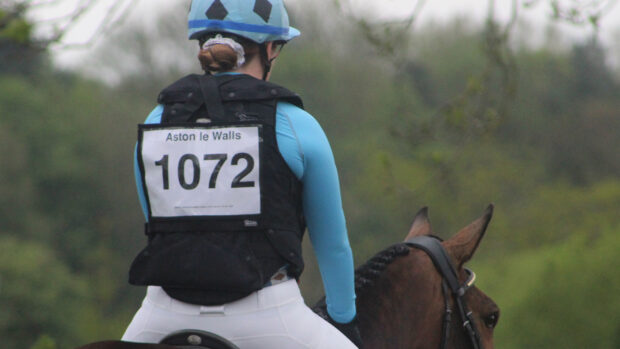A new standard for equestrian air jackets is in the pipeline, with hopes it will give additional confidence to manufacturers and riders.
Air vests from reputable brands already undergo significant safety testing and product development. All safety products marketed in the EU must be CE certified to show they comply with personal protection standards. The same applied for Britain, where at present, they must be CE or UKCA certified.
But there is not as yet a British or European-wide CE standard specific to equestrian airbags, in the same way as there is for body protectors and riding hats. The CRITT (Regional Centre for Innovation and Technology Transfer) in France published an equestrian-specific standard in 2022 (NF S72-800-2022), which is part of its CE certification testing process for riding air vests.
The British Equestrian Trade Association (BETA), as part of a European standards committee, has now drafted a standard specific to equestrian air vests, which drew from a number of sources, including the motorcycle and CRITT standards and British test house Satra Technology’s own air vest testing standard, with new input. It will harmonise protocols for testing equestrian air vests and will be an add-on to existing body protector standards, as part two of the European standard EN 13158.
European and BETA body protector standards are closely linked, and air vest standards will work in the same way.
“A standard gives manufacturers a benchmark and gives users an assurance that the garment has been tested like for like with other garments and meets the standard,” BETA chief executive Claire Williams told H&H.
The incoming standard features a combination of requirements, including inflation speed, maximum pressure, deflation rate, parts of the body it covers and lanyard length. This involves a complex table to take into consideration the differences between a child falling off a pony and an adult coming off an 18hh horse.
Option to test to new standard
Manufacturers will have the option to test to the standard. To do so, they will be required to supply their range of sizes, and testing will involve a variety of methods. The vests will also be measured for ergonomics as well as “innocuousness”, which means ensuring elements designed for protection will not accidentally hurt someone.
“When we are writing a standard, we have to be very careful to not be design-restrictive – that means putting something in the standard that would prevent innovation,” added Ms Williams.
The final draft has been submitted and is expected to take two to three years to go through the consultation, approval, publishing and harmonisation process.
Peter Riley, UK managing director of air jacket company Helite, told H&H the company is “fully behind the standard”.
He added that education – from fitting to care and more – is the brand’s big focus, adding that the company is keen to work with BETA on education programmes, with the standard a part of that process.
Rachel Ricci, managing director of Hit Air UK, told H&H the company welcomes any harmonisation of standards for equestrian use, although it hopes this will mean that BETA uses its influence to harmonise CE and UK equestrian certification rather than adding another layer of testing for a separate BETA label.
“The CE certification we currently undergo is already painstaking and requires rigorous testing of inflation time, pressures, deflation time, lanyard length, sizing and canister size, indeed a complex matrix of criteria,” she said, adding that process takes innocuousness into account.
She added that Hit Air UK chose to certify two of its latest models last year using the “very strict” French equestrian CRITT standard, and two more go through this month.
“We have been lobbying BETA for many years for certification to be made specific to equestrian use in the UK, so that it can be regulated by bodies such as British Eventing and British Showjumping,” she said. “We were, however, hoping that this wouldn’t take an additional two to three years.”
US research under way
In the United States, a separate two-year, multi-part project by the US Hunter Jumper Association and Virginia Tech Laboratories to look at equestrian safety vests is under way.
The campaign will review current equestrian vest protection standards, investigate the most common types of torso impacts and injuries, and evaluate current testing methodologies.
It will also develop a biologically modelled impact protocol for evaluating air and standard protective vests, and test and rate the performance of current chest protection systems.
Dr Stefan Duma, one of the lead researchers, told H&H the ultimate goal is to establish a ratings or evaluation system for consumers.
You may also be interested in…

‘You’re never too good to take safety seriously’: doctor speaks out on body protection

‘If it saves one life, it’s worth it’: top showjumpers lead the way with body protection

‘I’ve been very lucky’: rider speaks out on air jackets after freak cross-country fall
‘I nose-dived to the ground and Holly followed, landed behind me then rolled on my legs and pelvis’

Subscribe to Horse & Hound magazine today – and enjoy unlimited website access all year round
Horse & Hound magazine, out every Thursday, is packed with all the latest news and reports, as well as interviews, specials, nostalgia, vet and training advice. Find how you can enjoy the magazine delivered to your door every week, plus options to upgrade your subscription to access our online service that brings you breaking news and reports as well as other benefits.




